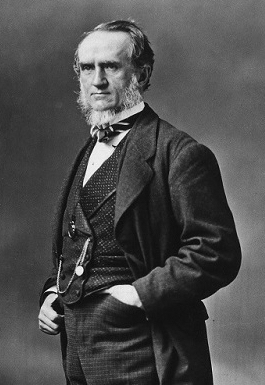|
 Artist
and technician, elitist and democratizer, the Canadian who changed
photography forever is featured in an exhibition at the Canadian Museum
of History. Artist
and technician, elitist and democratizer, the Canadian who changed
photography forever is featured in an exhibition at the Canadian Museum
of History.
His techniques predated Photoshop by about a century, but just because
we can achieve in a few clicks what would have taken William Notman days
of painstaking photography, painting, and literal cutting and pasting,
should make his legacy more impressive, not less. William Notman:
Visionary Photographer is the first-ever retrospective of his work. The
exhibition at the Canadian Museum of History originated with the McCord
Museum in Montreal, which holds a large collection of Notmanís images.
The skill and creativity evidenced in his unique large-scale
compositions is breathtaking. The exhibition shows the process Notman
used to combine individual photographs into group portraits featuring a
gentlemenís snowshoeing club, the Montreal Hunt Club or the Princess
Louise Dragoon Guards. Each image would be cut out and added to the
background and the result photographed to create a seamless whole.
Sometimes Notman included painted elements, blurring the line between
different kinds of portraiture to place dozens of people at the same
grand ball or social event. Indeed, artifice was central to much of
Notmanís work ó he was an expert at faking photos of winter activities
in his studio.
When the family textile business ran into trouble in Scotland, Notman
fled to Canada in 1856 to avoid fraud charges. He set up his photography
business in Montreal, becoming, in the exhibitionís words, ďa superb
networker.Ē He won the commission to photograph the construction of the
cityís Victoria Bridge, expanded his business to Toronto, Ottawa and
Halifax, and became an increasingly sought-after society portrait
photographer. By 1872 he had twenty-six studios around North America, 19
of them in the United States.
Although Notman also photographed nature and urban scenes, the images he
has left us of everyone from prominent churchmen and politicians to
ordinary Canadians are an invaluable record of our past. The wary gaze
of the soon-to-be-assassinated Thomas DíArcy McGee, the artificially
created merriment of a mass skating scene, the penetrating stare of
Sitting Bull, and the stiff formality of young women pretending to drink
tea ó through Notmanís work, they reach out across the decades and hold
us transfixed in front of their portraits. |
